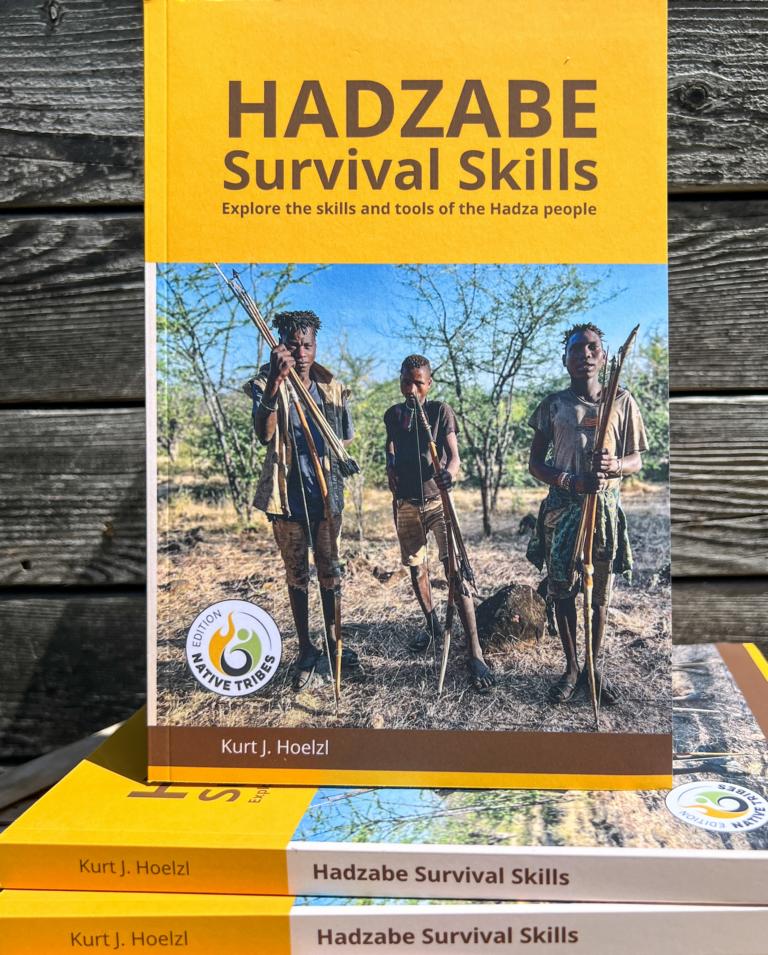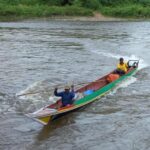Hoi An is located about 35 km south of Da Nang, which is roughly in the middle of mainland Vietnam. It is one of Vietnam’s most picturesque towns and attracts many tourists. Which in turn requires lots of fish and seafood for the restaurants there. The fishing fleet is anchored at and around Duy Hải port. Traditional coracles are used to tender the catch from fish trawlers to the market area.
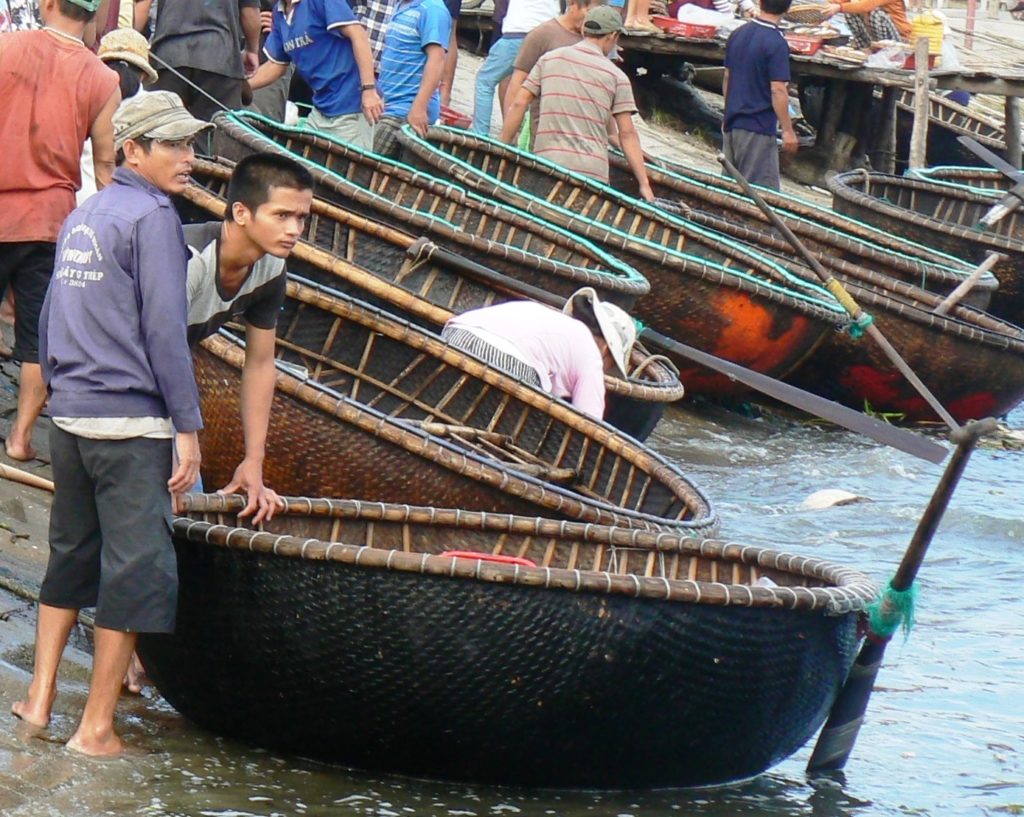
Such coracles can be seen all along the eastern coast of Vietnam. They change in style depending on the various requirements and specifics of every craftsman. Basket boats can be anything from non-reinforced watertight baskets to a combination of basket hulls and wooden upper structures. The shape is mainly round, but long-stretched basket boats can also be seen.
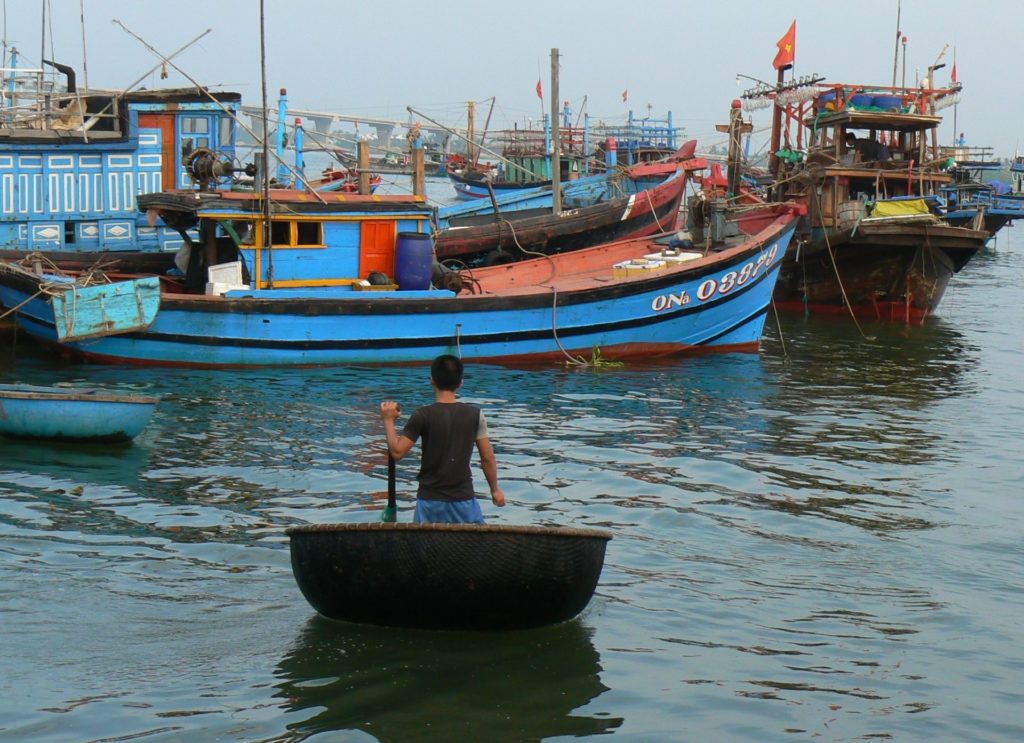
Why came coracles into existence?
During the French colonial era, fishing boats were levied, and most fishermen could not afford the taxes. They, therefore, did not use fishing boats alongshore anymore. Instead, they used watertight baskets, which the French did not consider as ‘boats.’
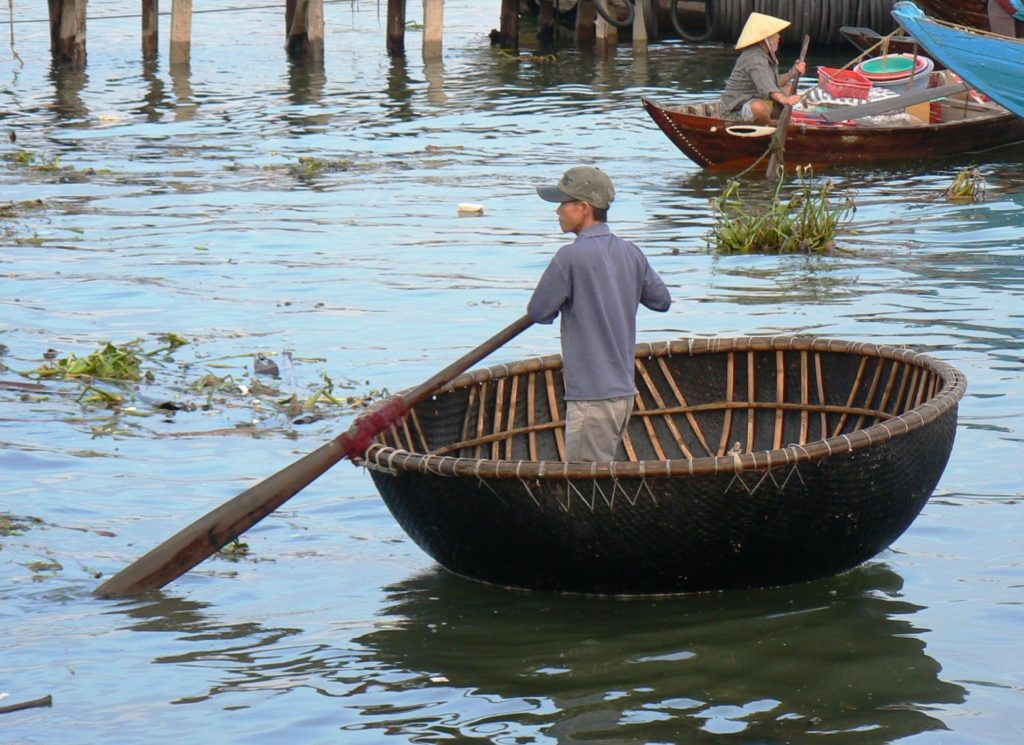
These baskets proved seaworthy, fast to ride, and cheap to manufacture. Therefore, they quickly caught on all along the middle and southern Vietnamese coastline. The only disadvantage was that the fishermen handling them sometimes became quite dizzy riding these boats in disturbed waters. As they have no keel, they tend to rotate freely around.
What are the main applications of coracles?
How are coracles manufactured?
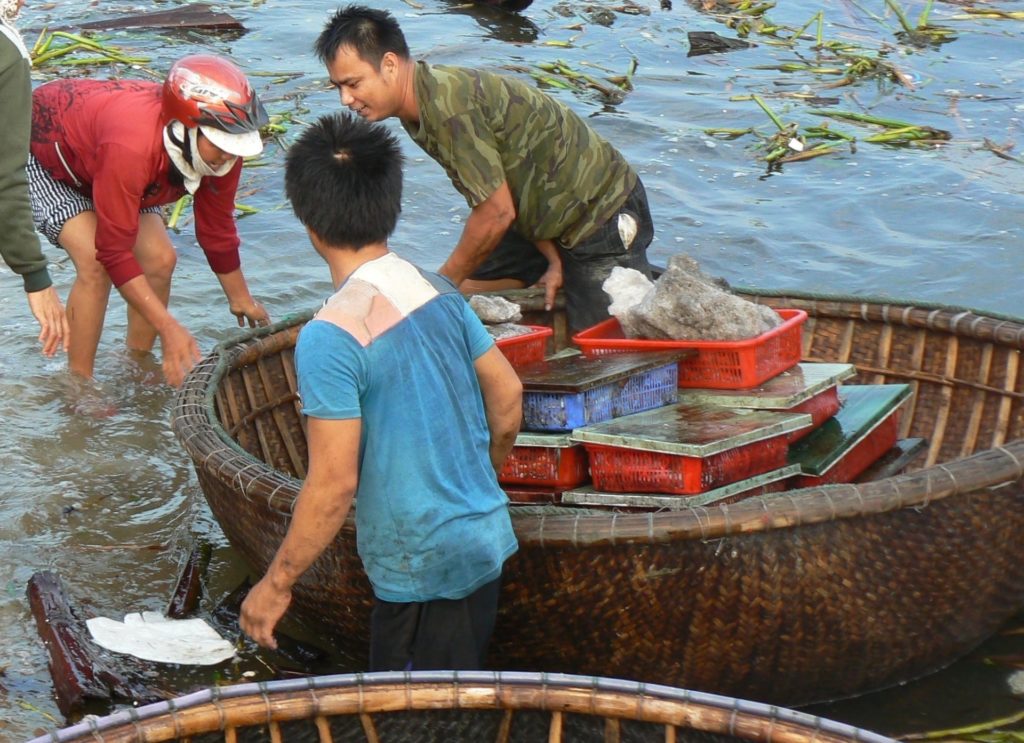
Coracles are used for:
- Tender goods from fishing trawlers to shore and vice versa
- They are used as fishing boats alongside shore and in freshwater
- They are also used as fishing boats on trawlers. These spread coracles over a wide area and collect them for eating and sleeping again. Each trawler will carry about one dozen coracles as a satellite fishing unit.
Due to the variety of coracles, we mainly concentrate on such boats used at Duy Hải. The manufacturing techniques are similar to others.
Raw material Bamboo
The primary raw material is thin, straight bamboo with a long distance between the nodes. The stems will be halved and quartered, and the inner and outer node areas will be smoothed. The result is long, straight, and flat bamboo stripes. These stripes still consist of two types of wood: an outer part of dense wood with a high silica content and an inner, softer part. This inner, softer wood will now be cut away, as it would rot earlier in water.
Weaving pattern
As a first manufacturing step, a flat mat will be woven. Each bamboo stripe will be hammered onto the neighboring bamboo stripe with a mallet and hardwood block. The weaving pattern depends on the available bamboo stripe wideness, the size of the final vessel, and the craftsman. Coracles at Duy Hải use a 1-over-1-under pattern. In other areas, 2-over-2-under patterns are more common. The semi-finished mat will be put into a weaving frame after weaving the basket’s ‘flat bottom’ part.
Producing the half-round shape of the coracle
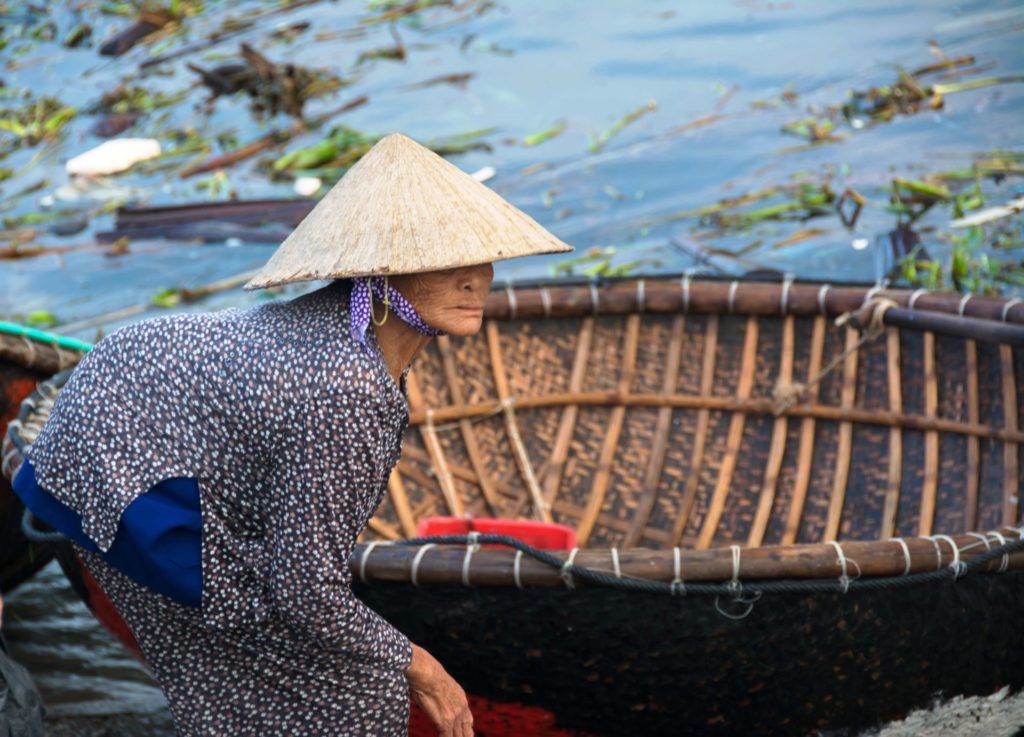
Two basic techniques for producing the half-round shape are a special weaving frame and a sink in the ground.
‘Sink in the ground’ means hollowing out this typical Vietnamese clayey sandstone. The negative shape of the final coracle will be dug into the ground. This is done so that the upper rim will still be above ground. The craftsmen lay the semi-woven mat above this hole, and others step on it. These people press the mat down and, if necessary, put heavy stones on it. This gives enough space to hammer bamboo strips together in case they loosen during the initial shaping procedure. After that, they continue weaving stripes to each other in a pattern that overlaps every quarter of the circumference. If the mat in the sink still behaves springy, the future basket boat can also be filled with sand.
Special weaving frame
A ‘Special weaving frame’ follows the same principle as above. This is a row of stilts above the ground with a sturdy circular ring connecting them. The flat, semi-finished weaving mat is pressed into this ring. Craftsmen have a variety of rings with different diameters so that the customer can choose his required size.
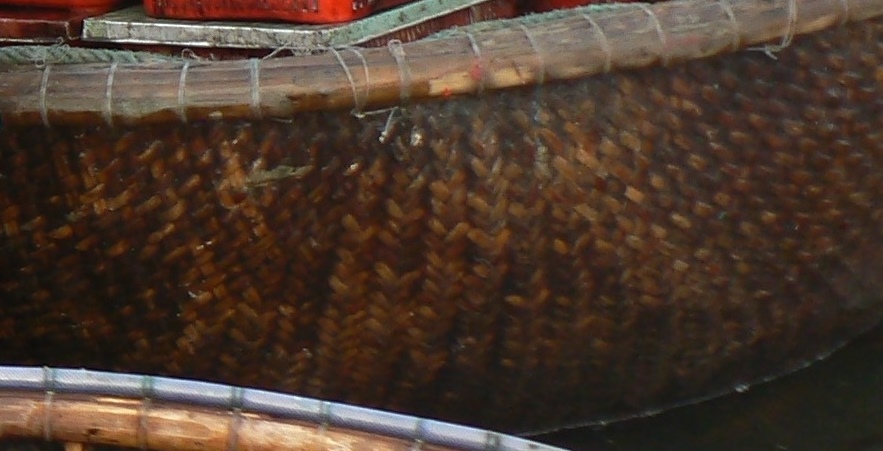
After weaving and shaping the basket, the rim will be cut, and internal reinforcements will be placed. These can be either made from bamboo or wooden poles. These reinforcements will stabilize the basketboat’s shape and serve as stepping places for passengers. A composite ring of split bamboo will be installed to keep weaved material and internal poles in place. This ring also keeps the round shape and protects the open ends of the weaving material. This massive rim also serves as a fixation point for the paddle. In former times, Rattan vines held all these materials together. Nowadays, heavy monofilament nylon fishing lines are the call of the day.
Waterproofing the coracles
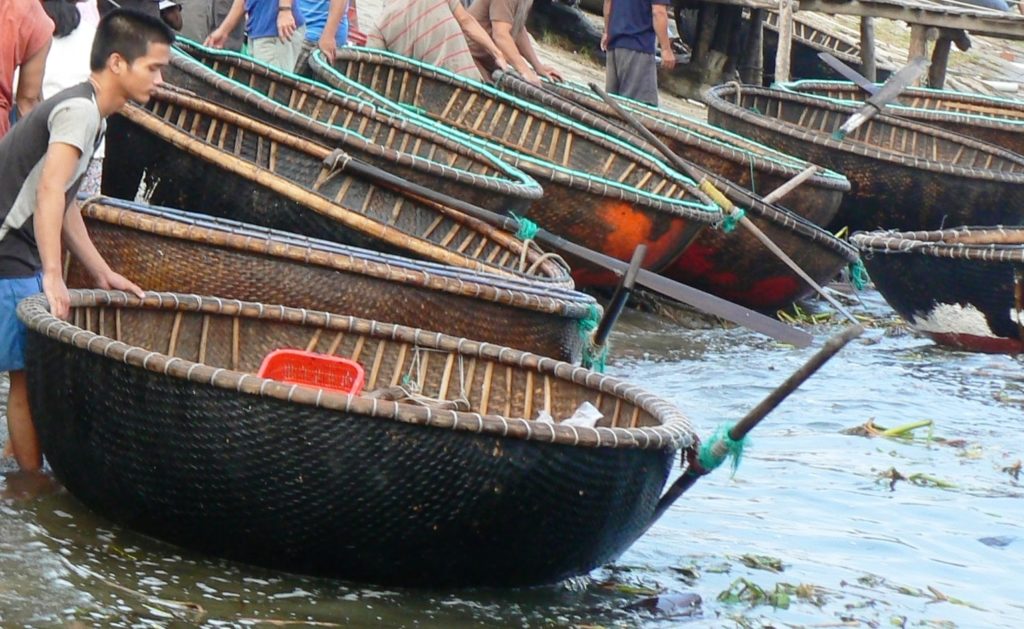
After final construction, most boats at Duy Hải are coated with bitumen. Previously, various tree resins were used, and dried buffalo dung was mixed into the resin. This created a web of interlinking fibers and also served as fillers for bigger holes. The big advantage of bitumen is that holes can be ironed out just by heating the cracked areas. For most boat owners nowadays, it is easier just to paint them over with whatever color of oil paint is available.
How to paddle coracles?
Most paddles are linked to the boat by a piece of cloth. This gives good maneuverability and can easily be changed when worn out. Most of the paddles originally had T-handles, but when lost, they will not be replaced in most cases. The paddle technique is unique. The paddle will not be lifted from the water but will turn 90 degrees when moving forward and backward.
Lessons learned from coracles at Duy Hải
- Local available raw materials and craftsmen’s skills and ingenuity can produce new products.
- Forget established norms and standards (a boat has to be long and made of wood). Think out of the box.
- Simple is not primitive but often creates high values.
Further readings about Small-Scale Fishing Boats on this website:
Building a specialized fishing boat at Padang
.

